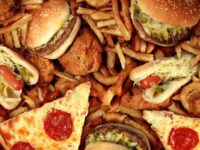Many athletes, referees, coaches, athletic trainers, and support crews—including parents, partners, and siblings —spend a significant number of mealtimes on the road, traveling from one sporting event to the next. With food budgets being tight and encounters with affordable (but often less-healthy) foods confronting you frequently at gas stations and convenience store, the ease of grabbing questionable sports meals and snacks might weaken your will to search elsewhere for higher quality food.
Without a doubt, eating a decent sports diet is a challenge when healthful food options are scarce. Regardless, athletes who travel by car and bus deserve to be optimally fueled to be able to perform at their best. That means being creative—and also planning ahead.
The following tips can help you eat a reasonably well-balanced diet from a gas station or vending machine— or at least, eat better than if you have no plan at all. Bigger gas stations and those closer to a main highway or busy towns tend to have more nutrient-dense foods than the small-town gas station’s shelves stocked with just a few bags of pork rinds and some candy bars. Hence, you (or the team’s driver) want to keep nutrition in mind when planning stops. Getting gas sooner at a bigger station is better than later, in the middle of nowhere.
Eating well on the road
For the purposes of this article, I offer the following definition of a well-balanced sports diet:
A well-balanced sports diet includes foods from at least 3 —
—and ideally 4—of these food groupings:
1. Fruits and vegetables for vitamins and minerals to boost your immune system and help keep your body healthy.
Examples: Orange juice, apples, applesauce, raisins, canned peaches, baby carrots, salsa, V-8 Juice
2. Grain-based foods to fuel your muscles and your brain.
Examples: Triscuits, graham crackers, popcorn (SmartFood), corn chips, pretzels, granola bars, corn muffins, dry cereal
3. Protein-rich foods to build and repair your muscles.
Examples: Peanut butter, almonds, sunflower seeds, jerky, protein bars, tuna fish (can, pouch), hummus, hard-boiled eggs, cheese.
4. Calcium-rich foods such as dairy, to enhance bone-health and also offer high-quality protein for muscles.
Examples: milk (dairy, soy), flavored milk (chocolate, vanilla), yogurt, cheese sticks, pre-sliced cheese.
Please note that well balanced applies to your entire day’s eating, not just one meal or snack. Hence, a good breakfast, lunch & dinner can help offset a sub-optimal snack. Balance also includes calorie-balance. By reading the calorie information on food labels, you can determine the portion-size that fits into your calorie budget:
approximately 600-800 calories per meal for an active woman and 800-1,000 calories/meal for an active man.
Turning convenience foods into a balanced sports diet
When you are at home, a “well balanced diet” that includes all four food groups in a meal might look like this:
Wheaties + milk + banana + hard boiled eggs
Whole wheat bread + turkey + cheese + lettuce/tomato, an apple
Brown rice + chicken + broccoli + yogurt (for dessert)
When you are eating from the gas station/vending machine, your balanced diet might resemble these “tasty” (ha!) meals:
Orange juice + popcorn + protein bar + yogurt
Salsa+ corn chips + almonds + milk
Banana + peanuts + Wheat Thins + cheese sticks
Fruits and vegetables can be the hardest foods to find when you are on the road. Because your body stores vitamins in the liver, you can have a diet low in fruits and veggies for a week or so and you will not suffer from malnutrition. (A healthy person’s liver stores enough vitamin C to last for at least three weeks.) But you will want to re-stock your liver’s diminished supply when you get back home. That means, enjoying extra fruit smoothies, colorful salads, and generous portions of fresh fruits and veggies whenever you get the opportunity to do so.
Traveling with a cooler
A wise alternative to “dining” at gas stations is to travel with a (mini) cooler (and re-freezable ice packs). Stock the cooler with sandwiches (PB & J, ham & cheese), water, 100% orange juice, chocolate milk boxes, and other wholesome sports foods. A pre-trip food-shopping spree at a BJ’s, Costco, or large supermarket can save you (and your teammates) a lot of money. Suggestions include:
Perishable items: Oranges, orange juice, baby carrots, peppers (eat them like apples); yogurt, sliced cheese, milk chugs; ham, hard boiled eggs, hummus; tortillas, wraps, mini-bagels.
Non-perishable items: tuna in pop-top cans, small jar of peanut butter, almonds; granola bars, graham crackers, Fig Newtons, dried fruit, V8 juice.
Note: your teammates might come begging for food from your personal cooler, so pack extra —or better yet, encourage them to pack their own cooler!
The Bottom Line
Performance starts with good nutrition. If you make the effort to travel to sports events, you want to make the effort to eat a winning sports diet. No amount of training will compensate for being a poorly fueled athlete.

